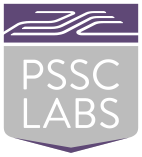While the current economic environment can be a time of great uncertainty, it has proven to also be a time of significant opportunity for those seeking grants to help fund a variety of technology solutions, especially High Performance Computing / HPC solutions. Despite some budget cuts, the National Institutes of Health received a $2.6 billion or 7 percent increase in fiscal year 2020 from FY 2019. Budget increases are also taking place in other technology-focused market segments such as education and medical research.
Researchers are well aware that much of the groundbreaking research facilitated by HPC is made possible only through grant funding programs offered by NIH and other institutions that have just received increased funding. Should cuts ultimately materialize, researchers can expect increased competition for funding in what is already a very competitive grant-funding process. One of the most well-known funding programs for acquiring HPC resources, the National Science Foundation’s Major Research Instrumentation (MRI) grant, already sees only 1 out of 5 applicants receive funding.
For those organizations that focus on or utilize High Performance Computing infrastructure as a critical component to their research, the current atmosphere for funding has elevated the need to implement best practices when applying for financial grants and understanding the full range of funding channels that are available. For example, those applying for Major Research Instrumentation / MRI grants through the National Science Foundation can significantly increase their chances of receiving funding by focusing upon the following seven core elements of grant success.
Seven Keys To A Successful MRI Grant Proposal
- Understand the Source. If you are applying for a grant from the National Science Foundation, it is critical that you focus on understanding what is important to the NSF, its current research goals and objectives, and how these could intersect with high performance computing. To get started visit https://www.nsf.gov/funding/preparing/
- Find HPC Funding Opportunities. While there are numerous HPC funding sources and your PSSC Labs team can help you with this process, you will want to review the National Science Foundation’s “Find Funding” resources: https://www.nsf.gov/funding/index.jsp
- Get Specific. When developing your grant proposal make sure that you clearly define your HPC computing needs. Also, know that your PSSC Labs team can work with you to clearly and effectively communicate your needs with all the details that the funding source is expecting. It is critical that you show that you will have a support team from the very start of your project through to completion.
- Be Prepared. Cost-Sharing is Key. According to NSF, “…the America COMPETES Act of 2007 (Public Law 110-69), cost-sharing of precisely 30% of the total project cost is required for Ph.D.-granting institutions of higher education and for non-degree-granting organizations. Non-Ph.D.-granting institutions of higher education are exempt from the cost-sharing requirement and cannot include it.” Learn more about cost sharing by clicking here and also remember that the PSSC Labs Team can help you explore the practical realities of the MRI HPC grant proposal requirements including cost-sharing.
- Focus on Benefits. Communicate the full potential impact and the practical benefits of your research and the role of high performance computing. The PSSC Labs team can work with you to provide research-backed insights into HPC performance data that can be critical to your grant proposal. PSSC also will work with you to demonstrate that you understand the HPC Cluster and the impact your Cluster will have on the research proposal.
- Build the Need. Talk to your data center and HPC team members as well as others in your area/market/industry to gather and build insights that will be a critical part of your proposal. You may also want to explore other successful MRI grants to learn what has been funded and how this could intersect with your research. Learn more.
- Share the Vision. Articulate the full impact of the research that will be made possible by the grant as well as the impact your research will have on your community and those whom you serve. You can also explore the MRI Map of Recent Awards for additional inspiration for your HPC project.
PSSC Labs has a 25+ year record working with grant winners to help secure grant funding from the Department of Defense, Department of Energy, National Science Foundation, National Institutes of Health, and many more grant-giving organizations. Our experience deploying turnkey HPC Clusters for computational chemistry, weather modeling, computational fluid dynamics, and biomedical informatics applications has helped us find specific and less known grants for scientists that are applicable to their research based on their field of study, parties affected by their research, and many other criteria.
If you are a researcher looking to acquire computing resources, reach out to PSSC Labs, and we will help you find grant programs that are applicable to your specific research. From the National Science Foundation’s Major Research Instrumentation grant, to the National Institutes of Health’s S10 grant, our 25+ year background working with leading research universities has given us an intimate understanding of the funding channels that are available and the application strategies you should employ.
Whether or not funding is ultimately increased or decreased to these grant giving institutions, it never hurts to explore all available funding channels. Talk to us about your research, and let PSSC Labs help you maximize your chances for securing funding.





